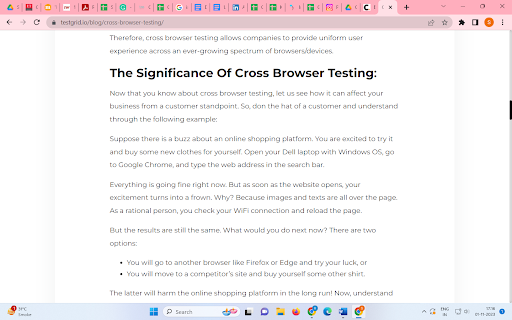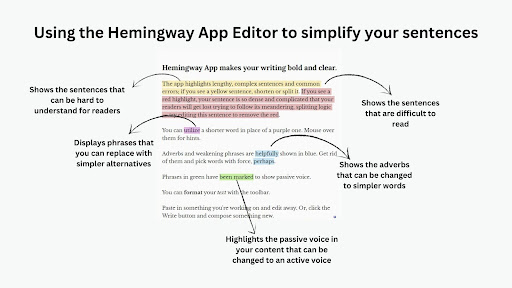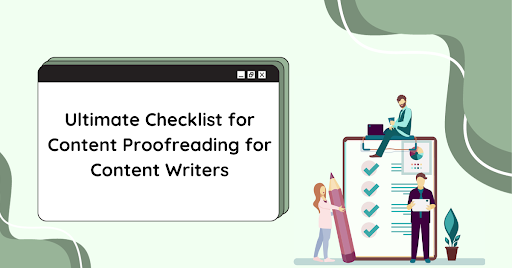Does proofreading by humans still matter, even with AI-powered apps like Grammarly that verify everything from spelling mistakes to sentence formation?
Yes, proofreading retains its importance because AI-powered apps cannot verify factors like clarity or style that humans can. By proofreading your article through an experienced proofreader or editor belonging to a reputed content writing agency, you ensure your write-up creates the right impression, and your message is conveyed correctly to the audience.
Many times, we think proofreading is a waste of time. Finalizing your content after doing a check on an AI-powered app is a risk. It can affect your content’s readability and accuracy. Many times, AI tools do not identify the subtle meanings or context of your text and may even suggest inappropriate changes, which, when accepted, can be disastrous. Though you may have a great product, poorly edited writing, spelling mistakes, and inappropriate capitalization can make your brand look unprofessional and increase the effort of the reader to understand it. Typos and grammar errors can ruin the content’s flow and irritate readers.
Many readers will ultimately not read the piece of writing as they are turned off by the errors. What’s more, poor quality of content on your website can affect your brand value and cause damage to your reputation.
To make proofreading an indispensable part of content writing, you need a proofreading checklist that your writers can refer to so that your content is perfect.
Proofreading Checklist Every Content Writer Should Have
This checklist contains everything you need to verify while proofreading your content:
1. Review the topic
The first step is to review the finished content and check if it aligns with your overall content and marketing strategy.
- Check if it matches your intent, whether to educate readers or to establish yourself as a thought leader in your niche.
- Verify if the content matches the interests of your customers based on your buyer persona and if it has solutions for their pain points.
- Check if your post keeps up with the current trends, seasons, or events.
- Watch out for any outdated strategies or tips that need to be replaced.
Hence, a proofreader’s job begins even before the writing job has started, i.e., via reviewing the entire topics stringently.
2. Structure and format
Once you have reviewed the intent of your article, you can move on to the technical aspects of your content, such as the formatting or structuring.
- Flow: Verify if your content makes sense from beginning to end. Check the introduction of the article and how you are going from one subheading to another. Verify the logic of the post as a whole and check if the thought in the post is well-organized. You can establish flow in your content by adding questions, images, and relevant statistics.
- Hierarchy of headings: Ensure you have used the appropriate headings to organize your content. You also need to check if the sub-topics to main headings are properly organized. Make sure your writing has bullet points instead of long paras. Make the most use of H1, H2, and H3.
- White space: White spaces are a big turn-off! It’s important that, as a proofreader, you ensure there is proper spacing between the words, paragraphs, and images, too.
Now that formatting and structure are covered, it is time to look at the other technical aspects:
3. Copywriting
- Grammar and spelling: This is where you can leverage an AI-powered tool like Grammarly to help you spot mistakes in spelling and grammar that you can instantly correct. However, it is important to note that suggestions by Grammarly are not always right. Hence, you need to use your expertise here.
- Plagiarism: Check if your post is free from plagiarism and see if you have cited the sources properly and attributed them correctly to any third parties from whom you may have borrowed.
- Active and passive voice: Read the content out loud to see if there is a healthy balance of active and passive voice. The use of too much passive voice can make your content look flat and also make a sentence unnecessarily complicated. Ideally, the passive voice in your content should be 10% or less. Active voice makes the content clearer for readers and prevents it from becoming too wordy.
- Introduction: The introduction should be so impressive that it will hook the reader to read the entire article. Some kickstart ways to do it are storytelling, comparison, statistics, and question marks. This helps arouse emotions and generates curiosity in the minds of the readers, making them read the entire piece.
Here is a screenshot of how we used storytelling to explain a complex topic in a technical blog we wrote for a client:

Image: Introducing the topic ‘Significance of cross-browser testing’ in storytelling format
4. Readability
Your post should be reader-friendly, with adequate white space. Here is what you need to check:
- See that text styles like bold or italics are used sufficiently to give the readers a break from the usual text and help them easily spot the takeaways while skimming the article.
- Ensure that content is understandable to the average consumer without jargon that can confuse them. One way to check if your content is reader-friendly is by seeing if your content is easy enough to be understood by a sixth-grader.
- You can use the Hemingway App to make your writing more readable and look better. It is an editor that highlights and improves the grammar, fluency, and sentence structure of your content.

Image: Displays how you can make your content more readable and presentable
Blue: Shows the adverbs that can be changed to simpler words
Green: Highlights the passive voice in your content that can be changed to an active voice
Red: Shows the sentences that are difficult to read
Pink: Displays phrases that you can replace with simpler alternatives
Yellow: Shows the sentences that can be hard to understand for readers
- Ensure that content has short paragraphs that can be easily read and contains bullet points, wherever needed. The reader should be able to pinpoint the post’s most useful information easily whenever needed.
5. Reference links and attributions
For content to be of high quality, research and references must be added to increase the post’s credibility. Ensure you check these two important factors:
- Credibility: See if the sources you have used are credible and trustworthy in your niche. Adding links to reliable sites like Harvard Business Review and Wikipedia establishes the trust.
- Source properly cited: See that any quotes, images, or studies are properly credited to the right sources. Refrain from any copyright issues that may occur.
The Meticulous Proofreading Process We Follow At Degefy
At Degefy, our expert content writers and editors follow a systematic process for effective proofreading that ensures every content is readable, optimized, and error-free.
- First, our editor does a quick check to see if the outline of the post is proper, with a suitable title, introduction, and sub-headings that are properly formatted.
- Then, the content is checked to verify if the information is accurate and taken from reliable sources.
- Next, the write-up is checked meticulously using reliable tools like Grammarly to identify typos, sentence formation, grammar mistakes, and other errors. We also check each internal and external link to verify if they are from the right sources.
- If mistakes are found, they are corrected in suggesting mode by the editor, and the content is again given to the writer to modify. The writer is instructed not to remove the comments so that the editor can verify if the changes have been made or not.
- We never approve content until we are 100% satisfied with its flow, accuracy, structure, readability, and information, even if it takes multiple checks and many rewritings from the content writer.
Conclusion
Whether your content is a blog, an email, a social media post, or website content, proofreading should not be overlooked. When your content is error-free and perfect, you boost your authority, make an excellent impression on your audience, and show them how you care about your work and pay attention to detail.
If you want to derive these benefits, you need to entrust your proofreading to a reliable content writing agency like Degefy, which has extensive experience writing and editing content for top brands worldwide. Our seasoned team of content writers and editors will polish your content to perfection, weeding out the mistakes and ensuring that language, tone, and style resonate with your brand’s voice.
